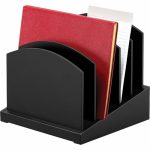Each year, American children miss over 22 million days of school thanks to the flu, colds and other infections.
Surprised? You shouldn’t be — a whopping 70% of teachers say their classrooms are not regularly disinfected by custodians, and over half report spending their own money and time cleaning to reduce the number of germs in their classrooms.
If you have a school-aged child, you probably already know that they get colds an average of 6.5 times a year, with each infection lasting three to five days. These infections don’t just keep the children home from school; they also result in parents missing approximately 125 million workdays a year caring for their sick children. Teachers are also not immune, and they take an average of 5.3 sick days each school year.
Most teachers consider their classrooms clean, but clean doesn’t necessarily mean germ-free. Sick children often come into school, sneezing on desks, coughing near other students and spreading germs onto pencil sharpeners, cafeteria tables, doorknobs, faucets and more. Each item then becomes a colony of germs, waiting to infect the next student who touches it.
So what can be done?
Teaching children to wash their hands frequently can reduce absenteeism by nearly half. Teachers and parents can work together to encourage proper hand washing and teach kids the right techniques, including using water, soap and rubbing for at least 20 seconds.
While children are also encouraged to share at school, they should be taught about what is appropriate to share with fellow students. Sharing art supplies and toys is great, for example, but many young children don’t realize that sharing cups, food, glasses and other objects prone to germs isn’t. Older students should also be cautioned against sharing makeup.
Teachers can also set good examples in the classroom by coughing or sneezing into tissues. When none are available, coughs should be directed to a sleeve to prevent soiled hands from touching doorknobs or other objects.
Having disinfectant wipes on hand can also help eliminate germs. Students may be asked to wipe down their desks after classes, and teachers can use them for quick clean-up when necessary. Contact our team of experts today at DP Supply, Inc. to get our favorite recommendations!
Making these small changes can result in huge differences when it comes to spreading germs and reducing absenteeism for students, teachers and parents!




